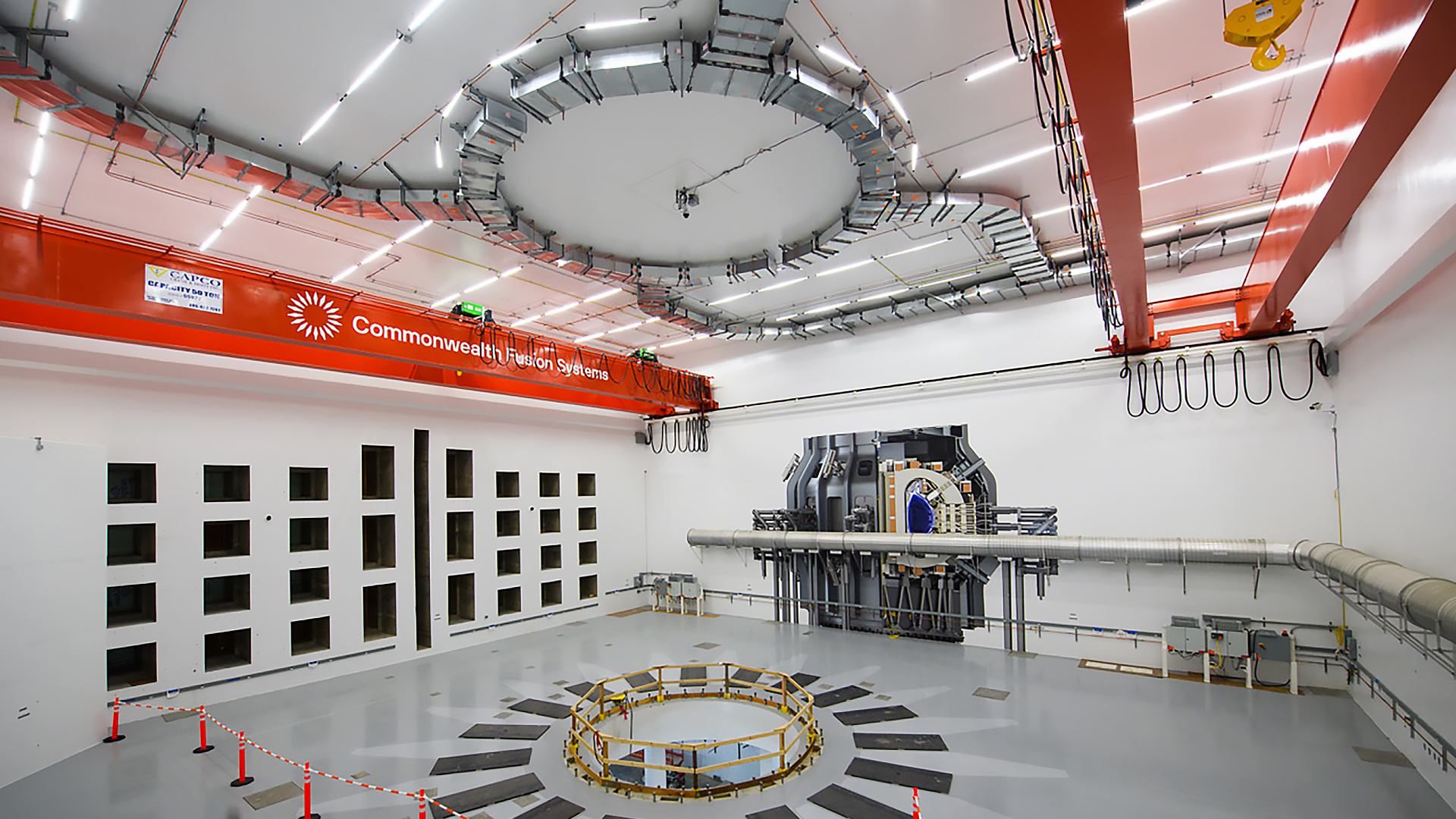2023 Climate Tech Companies to Watch: Commonwealth and its compact tokamak
Commonwealth has made measurable progress toward its goal of building a practical fusion reactor that generates carbon-free electricity.

Explore the 2023 list of 15 Climate Tech Companies to Watch.
Commonwealth Fusion System’s approach to fusion builds on decades of research—and comes after decades of disappointment within the industry. Yes, the company’s first commercial reactor is still nearly 10 years away, but if it works, the climate benefits will be profound.
Intro
Commonwealth Fusion Systems hopes to be the first company to take nuclear fusion from the lab to the market.
A spin-out from MIT’s Plasma Science and Fusion Center, Commonwealth is following a well-trodden design path by using a tokamak—a doughnut-shaped device in which radio waves heat isotopes of hydrogen to above 100 million °C (180 million °F). The resulting plasma is squeezed by a powerful magnetic field until the atoms fuse, releasing a burst of energetic electrons and neutrons.
What sets Commonwealth apart is the compact size of its tokamak. Its prototype SPARC reactor will be 40 times smaller than the international ITER fusion reactor currently being built in France and could come online five years earlier.
Key indicators
- Industry: Fusion energy
- Founded: 2018
- Headquarters: Devens, Massachusetts, USA
- Notable fact: Commonwealth’s prototype reactor will use 10,000 kilometers (about 6,200 miles) of high-temperature superconductor tape.
Potential for impact
“Electrify everything!” cry climate experts. Electric motors, cars, and heat pumps are inherently more efficient than their oil- and gas-burning brethren. But to get to net zero, the world will need a lot more fossil-fuel-free power stations to produce enough renewable electricity for these systems. Commonwealth’s fusion plants will turn heat from fusion reactions into steam that turns turbines to produce power without generating harmful emissions.
It’s a sci-fi dream shared by dozens of other startups. Some are following Commonwealth’s footsteps with their own tokamaks, but there are also other promising approaches. Pulsed fusion reactors embrace the instability of fusion reactions and can be made even smaller than tokamaks. At least one of these companies, the well-funded Helion Energy in Everett, Washington, claims it will generate electricity directly from the fusing plasma and hopes to be selling electrons to customers by 2028.
Should Commonwealth (or one of its rivals) succeed, fusion might fulfill the long-promised dream of consistent, carbon-free power with virtually no radioactive waste.
Caveats
Of course, developing and building a first-of-its-kind fusion reactor is no small feat. The SPARC prototype alone will run through most (it not all) of the nearly $2 billion Commonwealth has raised to date.
Nor is its fundamental technology guaranteed. To get its tokamak so small, Commonwealth is using thousands of kilometers of high-temperature superconducting tape to produce 18 immensely powerful electromagnets. Those magnets may not work together as expected, and still require cooling to -200 °C.
No fusion startup—or even research lab—has yet generated more energy from a fusion reactor than what was needed to drive the process. Experiments in December 2022 and July 2023 at Lawrence Livermore National Laboratory achieved what’s sometimes called scientific net energy gain (or in technical parlance, a Q greater than one). But that calculation doesn’t account for the energy needed to power Livermore’s reactor lasers, so on the whole, the lab’s reactor still produced less energy than what was taken from the electrical grid to run it.
Moving from the symbolic milestone of breakeven to the affordable and repeatable reactions necessary for commercial power production will require another huge technological leap.
When
In 2021 the company announced the demonstration of a 20-Tesla electromagnet—the most powerful of its type ever made. And last December, construction of the SPARC tokamak commenced at Commonwealth’s new headquarters in Devens, Massachusetts, where a manufacturing facility is also taking shape to produce more magnets.
The company says SPARC should generate its first plasma as soon as late 2025, and that model will incorporate 14 of the 17 systems needed for its successor, the ARC fusion power station. If things go according to plan, that ARC reactor could start feeding the grid in the early 2030s.
Next steps
Keep an eye out in early 2026. That’s when Commonwealth wants SPARC to deliver its first Q greater than one, signifying a net energy gain. The company expects SPARC to ultimately have a Q greater than 10, which is the level of performance necessary to offset the reactor’s significant heating and cooling requirements and inefficiencies in the system. Commonwealth’s simulations suggest SPARC could produce up to 100 megawatts of fusion power.
Even as it designs the 200-megawatt ARC reactor, Commonwealth is scouting a location for it. Although the US Nuclear Regulatory Commission recently clarified regulations that should make it easier to site fusion reactors there, the company is searching worldwide.
Explore the 2023 list of 15 Climate Tech Companies to Watch.
Deep Dive
Climate change and energy

This rare earth metal shows us the future of our planet’s resources
The story of neodymium reveals many of the challenges we’ll likely face across the supply chain in the coming century and beyond.

Andrew Ng’s new model lets you play around with solar geoengineering to see what would happen
The climate emulator invites you to explore the controversial climate intervention. I gave it a whirl.

Want to understand the future of technology? Take a look at this one obscure metal.
Here’s what neodymium can tell us about the next century of material demand.
Stay connected
Get the latest updates from
MIT Technology Review
Discover special offers, top stories, upcoming events, and more.
